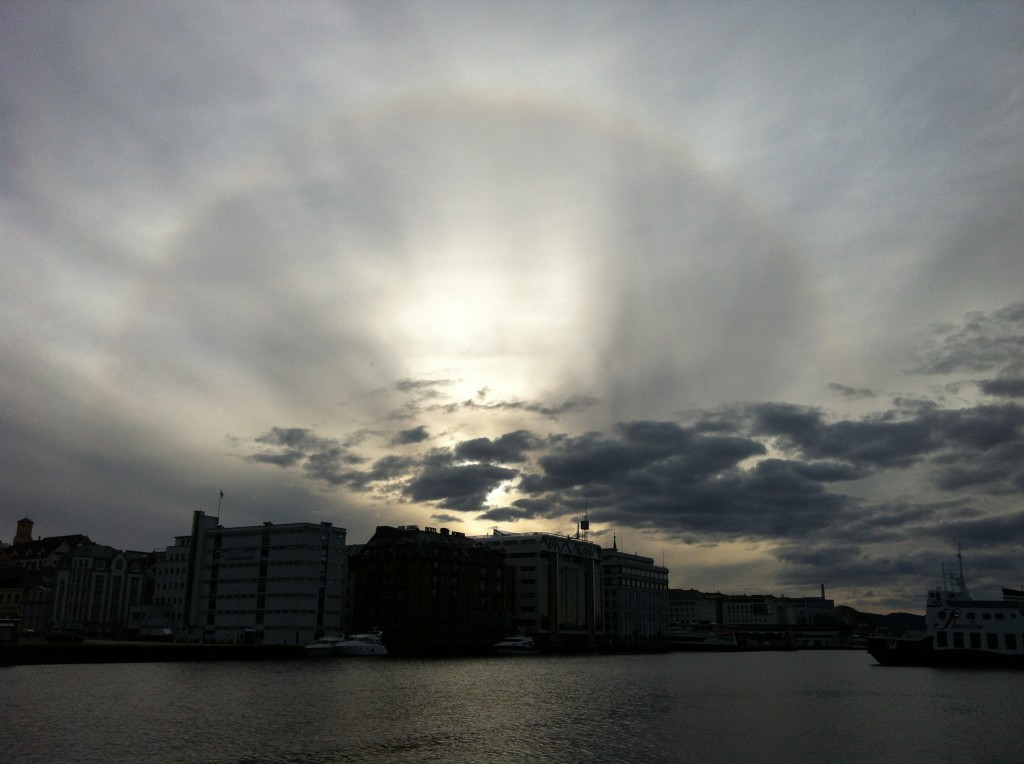A rainbow that isn’t one, technically speaking.
Browsing through the photos on my phone, I came across the one below that I took two years ago in Bergen. I remember taking the picture with Nadine on our way home, and wanting to look up what phenomenon caused this ring around the sun, but I never did – until now.
So, according to Wikipedia and various other internet sources, what we see in that picture is a 22° halo. In contrasts to rainbows which you see when you are facing away from the sun, this kind of halo forms as a circle around the sun. Also in contrast to rainbows, in this case sun rays aren’t refracted at raindrops, but at ice crystals. Since ice crystals typically have a hexagonal shape, this causes the radius of the halo to be on average 22°. On average, since refraction still depends on the wavelength of the refracted light – hence the halo is red-ish towards the middle and blue-ish towards the outer rim. This is also different in a rainbow, where the outer rim is red and the inner rim is blue.
Why is that? Stay tuned for the next posts, I’m still trying to figure out a good explanation. For those of you who saw my post on teaching videos a week ago, you might have noticed that I was working on something related to refraction and reflection and light already then… ;-)
